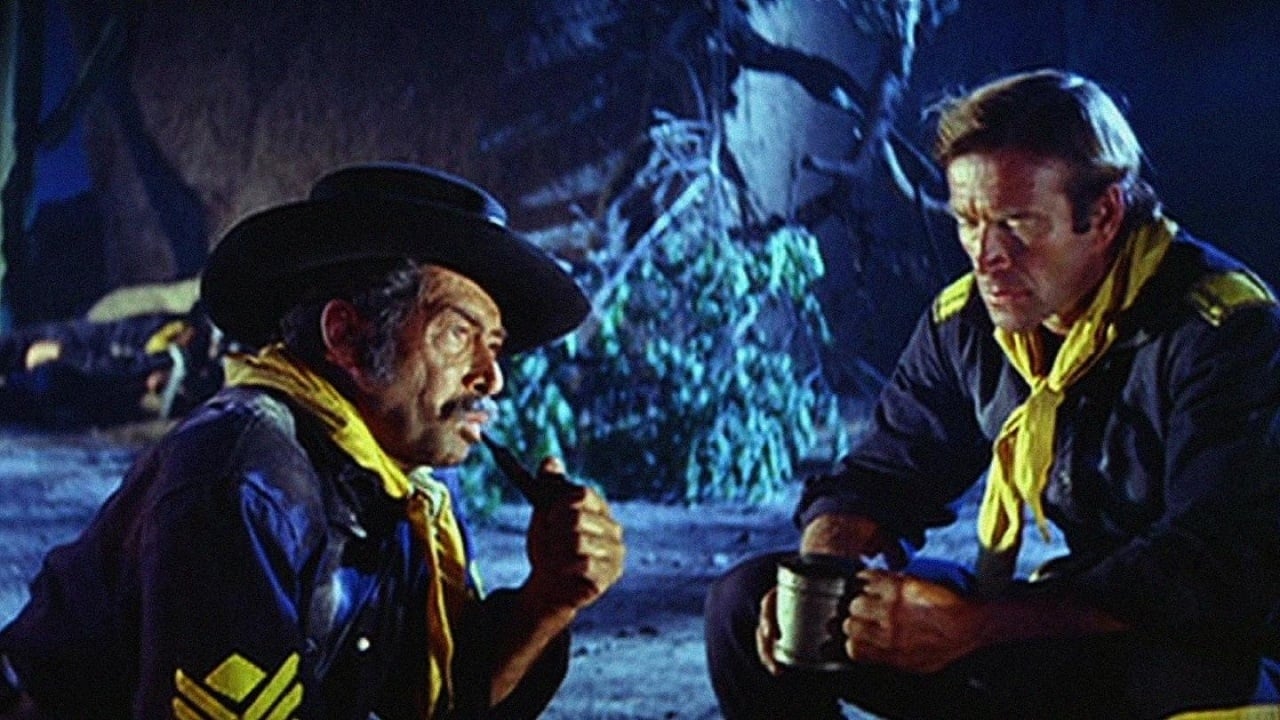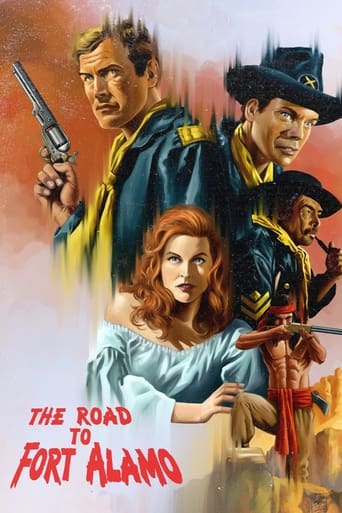

Just so...so bad
... View MoreAlthough it has its amusing moments, in eneral the plot does not convince.
... View MoreThe film never slows down or bores, plunging from one harrowing sequence to the next.
... View MoreThe movie is made so realistic it has a lot of that WoW feeling at the right moments and never tooo over the top. the suspense is done so well and the emotion is felt. Very well put together with the music and all.
... View MoreThe Road to Fort Alamo (1964) ** (out of 4)Solo rider Bud Massadey (Ken Clark) comes across a Calvary massacre. A dying man gives him a paper payment of $150,000 that is to be paid to the U.S. Army. Bud teams up with a gang to get the money but he's double crossed by a card cheat. Soon Bud and his partner are rescued by another Calvary and sure enough he eventually catches up with the cheat.Mario Bava's THE ROAD TO FORT ALAMO is a pretty bland and boring Spaghetti Western that really doesn't have too much going for it. The Italian director was hitting a very high mark during this point of his career and it's easy to call this the least entertaining movie he made during this period. It's really too bad that this movie seems to have been a "director-for-hire" project as there's just not too much life here.Technically speaking, the film is certainly well-made and it appears that Bava got the job done. That job was getting the film completed without it going over budget. The film was obviously shot with a shoe-string budget and the director at least manages to make it look very professional. I thought the costumes were terrific and Bava at least managed to make the atmosphere seem as if you were back in this era.With that said, the story itself was just rather boring and none of the characters were all that interesting either. Heck, I'd go even further and say that the entire film was just rather bland to the point where you didn't care about anything that was going on. The performances were okay for the most part but none of them really jumped off the screen to grab your attention.
... View MoreTHE ROAD TO FORT ALAMO is the first spaghetti western directed by Italian genre maestro Mario Bava, but as a film made in 1964 it has more in common with the American westerns of the 1950s than the Sergio Leone-influenced genre films of the late 1960s onwards. The film itself is routinely plotted but turns out to be a lot of fun regardless, with an action-heavy template meaning that there's barely a slow moment to be had throughout.The film's protagonist is played by the strapping Ken Clark, a familiar face from the Eurospy films he made during the mid 1960s. He's massive here, dwarfing his opponents in the various fight scenes, and he acquits himself well with the material, having a natural flair for the genre. He reminded me of Richard Harrison in many ways. His character undergoes quite the journey in this film, with many plot twists, double crosses, and betrayals en route.The film's antagonists are the usual bunch of murderous Native Americans and gold-hungry double-crossers. There's plenty going on throughout and the film, which was shot in Italy rather than Spain, looks very nice. Bava's skill comes in the night-time scenes which have the great use of colour that the director is well noted for. THE ROAD TO FORT ALAMO might not be a classic, but as a serviceable spagwest it works a treat.
... View MoreItalian movie director Mario Bava is best known for his horror movies. But during his career he found time to direct other kinds of movies, including spaghetti westerns, "The Road To Fort Bravo" being one such example. The movie is pretty unknown, and it's easy to see why. Throughout it has the feeling of a slapdash production. The budget was obviously pretty low, so the production values are pretty tacky, from the costumes to the poor special effects. Bava seems unable to show any visual flair on this project, except for a few scenes that take place in caves. But the main problem with the movie is the script. It feels like a first draft, with many scenes feeling rushed or unfinished. This quickie enterprise is capped with a pretty bad musical score by Piero Umiliani, which consists of 60s style music at its worst. The best that can be said of the movie is that its running time is fairly short.
... View MoreThis is my second time watching the first of Bava's infrequent (and most atypical) ventures into Western territory. Coming at the start of the genre's idiosyncratic "Euro" (and, in the long run, highly influential) overhaul, it obviously feels the least like your typical "Spaghetti" Western – even if, truth be told, MINNESOTA CLAY from the same year (on which Bava is reputed to have worked but which is credited to one of the formula's undisputed masters i.e. Sergio Corbucci) is more successful in this regard! Anyway, the movie under review is considered among Bava's minor efforts – and rightly so; yet, it is nowhere near as bad as some make it out to be and, to my mind, preferable to his comedy-oriented last entry in the field, namely ROY COLT AND WINCHESTER JACK (1970; with which, as it happens, I will be re-acquainting myself presently). As I said, the film mainly looks to the American model – albeit following its more routine examples – for inspiration, but that is not necessarily a bad thing. Interestingly, Bava starts off proceedings with an inconsequential 'prologue' (featuring favourite "Euro-Cult" villain Gerard Herter) involving a crooked card game and an amusingly sleepy bartender. Rugged (and immensely hirsute) hero Ken Clark – who would return for the recently rewatched SAVAGE GRINGO (1966), which Bava helmed albeit without credit – is a Southern landowner who lost everything to a Northern onslaught during the Civil War, and whom he now plans to get back at by posing as a Union officer and 'withdraw' a cache of money from the bank destined to the enemy forces! Unluckily for him, the associates he picks up for the job – led by another familiar face, Michel Lemoine – prove greedy and leave him and his closest ally for dead or, more precisely, at the mercy of the marauding Osage Indians! Eventually, the two men are saved by a Southern Army wagon train bound for the titular outpost so that they are forced to keep up the military disguise; ironically, they are soon joined by Lemoine himself, the sole survivor of the renegade gang who also had a brush with the redskins but is still in possession of half the stolen sum. Clark, whose uniform bears the higher rank, now delights in rubbing his treacherous ex-partner the wrong way – but, in fact, neither has given up on the loot and each intends making off separately with it at some point. However, the Osage come down en masse on the small unit (which includes a by-the-book Colonel, a wily Second-in-Command soon in on Clark's ruse but willing to keep it to himself, the priggish wife of the Colonel at the fort and even a female prisoner – earthy redhead Jany Clair naturally comes to fall for the brawny charms of, and senses a misfit kinship with, our protagonist – being escorted there for trial) and they have to stay on and fight it out! A nice touch has the Indians make flower arrangements via the 'confiscated' paper money (which to them is useless) and send them floating down river in order to lure avaricious soldiers out into the open and slay them; this idea then comes into play again at the inevitable showdown between Clark and Lemoine.While Bava was clearly ill-at-ease within this particular genre (unflatteringly billed in this instance as John Old), here at least he incorporates his recognizable colour palette to effective use; Carlo Savina's score, then, includes the token ballad warbled over the opening credits and, surprisingly, cues which bear an uncanny resemblance to those composed for the soundtrack of the 1957 Mexi-Horror classic THE VAMPIRE!
... View More